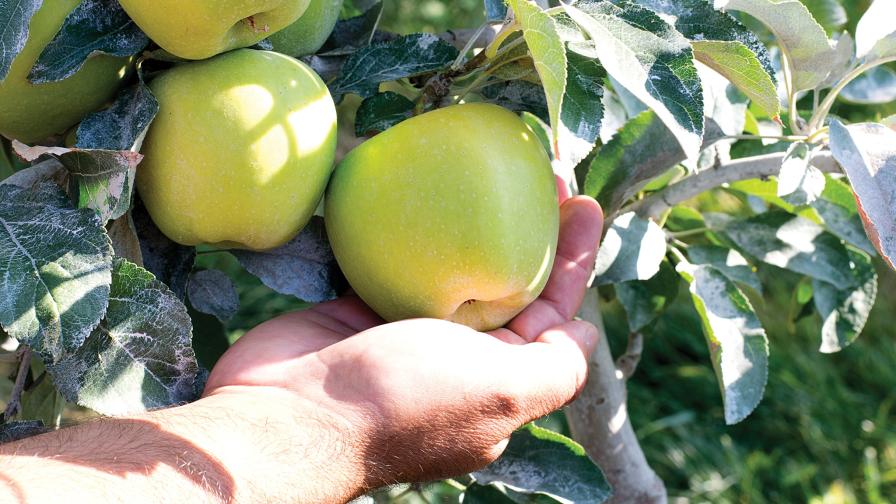Automation A Big Part Of Tree Fruit Topics At Great Lakes Expo
Automation and advancements in training systems were among the popular topics at the Great Lakes Expo in Grand Rapids, MI. During the three-day event, researchers from Michigan, Washington, and international destinations addressed what the future holds for tree fruit growers.
Here are some of the highlights:
Carol Miles of Washington State University spoke to a standing-room-only crowd about a mechanical harvester trial that Washington State University is working on with both a raspberry harvester and a blueberry harvester in hard cider apple orchards. Miles and her research team saw an 82% harvest efficiency with the mechanical harvester. She also saw a reduced picking cost with the harvester. Miles noticed that there was damage to the tree with the mechanical harvest, but percentage was still low. For more on the mechanical harvest of hard cider varieties, visit http://maritimefruit.wsu.edu.
Matt Whiting of Washington State University spoke about introducing mechanization into a sweet cherry orchard. In his trials, his research team used mechanization in the form of pruning, topping, and hedging. He noted that light interception and fruit were unaffected by pruning. Whiting is advocating an alternate year program of full mechanical pruning and the next year mechanical thinning followed by hand. Whiting is also testing a shake and catch harvest device for sweet cherries. With this system, Whiting’s team saw a four-fold increase in harvest efficiency.
Jeff Cleveringa of Starr Ranch Growers R&D in Wenatchee, WA, spoke about the future of automation in apple orchards. For Cleveringa, mechanization serves the grower best if it can be used for more than one purpose because a grower can recoup the investment on the equipment faster, and see labor expense savings. The future of automation in orchards are autonomous vehicles.
Alberto Dorigoni of Istituto Agrario Di San Michele All’Adiege in Italy discussed how mechanical pruning fits into the modern orchard. Dorigoni’s research includes a window pruner, which opens 1-4 “windows” near the trunk of the tree, near the canopy. This window pruning machine is designed to imitate hand pruning. The shape of the canopy after the window pruning machine is similar to a hand-pruned spindle tree. He sees mechanical pruning as just one of the components of growing apples in a modern orchard. Window pruning has a “reset effect” on the branches that triggers centripetal fruiting, and helps shape the fruit architecture like no other tool. Fruiting walls reduce input, including hand pruning and spraying volumes.
For extended coverage of the Great Lakes Expo, visit American Fruit Grower editor Christina Herrick’s twitter page at @HerrickAFG.










